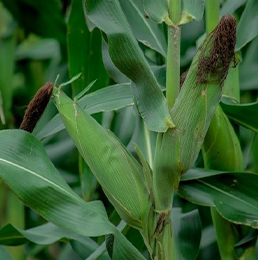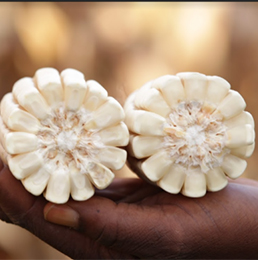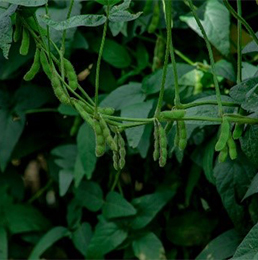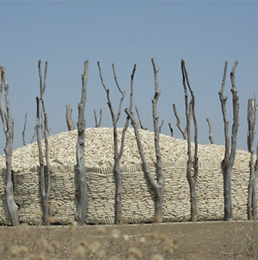SOIL PHYSICS AND SOIL-LIFE, AND THEIR IMPACT ON THE CROP PRODUCTION POTENTIAL OF A FIELD
The month of August is one to put your summer crop production plans in perspective. In the last two articles we have focused on maize yields and limiting factors to crop yields in general highlighting soil pH and rainfall amounts and distribution. In this month’s issue we focus the dynamics of soil physics and biology and how these affect the production potential of crops in a particular field. In more ways than one the yield capacity of an environment is impacted by the aspects of soil physics such as texture and depth, as well as aspects of soil biology such as populations and types of microbes and soil organic matter (both humus and crop residue).
The production potential of a soil is used as a guide to determine what crops can be grown in a particular field.
At Seed Co, our commitment is to offer seed solutions to every farmer and further advise them on how to extract the best of the potential of the seed. When we echo our mantra, “It Starts With The Right Seed.”, we are emphasizing that:
✓ All crop production activities are focused on extracting a crop out of a seed and so care must taken that support inputs and operational costs are not invested in a seed variety that will not give a good return on investment;
✓ We emphasize choosing the right variety of seed is a good agronomic practice that ranks as number 1, when forecasting yields and quality of a crop;
✓ We also warn that there are consequences to wrong seed variety choice, and they can affect the bottom line of an enterprise, with a few cases where projected outputs of the entire crop production sector has been affected, when yields and even quality of a crop has been compromised resulting into crop loss.
✓Content such as is in this article is Seed Co’s signature of going an extra mile in providing advisory around the dynamics of the environment in which the seed is placed and grown, so that our esteemed farmers can obtain a desired high yielding crop. This article highlights aspects of the soil environment that must inform the way a farmer should manage their fields, in order to maintain or improve their production potential. An understanding of the aspects of soil physics such as the depth of the soil in a particular field, the structure of the soil (including soil organic matter and humus), as well as the texture of the soil (highlighting percentages of clay, sand and silt) helps as a guide to determine the production potential of a particular soil in an environment. Here we will deal with soil structure and depth, and continue with soil biology and how to practically leverage it.
To delve deep, we highlight soil texture and depth, limiting factors, and the pros and cons of cultivation practices
1. SOIL TEXTURE AND DEPTH AS IT RELATES TO THE CROP PRODUCTION POTENTIAL OF A FIELD
i) Soil texture simply refers to the relative percentage of clay, sand and silt in a layer of soil. Quantitatively, clay sand and silt particles have standard measurements and can be quantified in soil sample, and this forms one of the basis for soil classification. The feel of the soil, defined as gritty course or fine and smooth is a qualitative means of classifying a soil sample in a field. These varies in portions of a particular field, and influence crop production. Academic writings state the various particle size grades that falls under each of clay sand and silt.
Figure 1 below shows the soil texture triangle which is used to classify a soil, based on particle grades.
Grieve et al., 2012 stated that soil texture is an important soil property that drives crop production and field management.
• A soil with clay percent in the range 15 – 35% is said to have good enough colloidal forces to hold sufficient moisture and nutrients in the rooting zone of a crop.
• A soil with more silt in its top layer tends to cap a lot and would restrict rates of water infiltration, thereby impacting on amounts of plant available water, and in situations of high rainfall even cause either standing water which brings about anaerobic conditions or run-off which causes loss of top soil layers.
• A soil with high percent sand will be considered light and coarse, and will usually not have good water and nutrient holding capacity, and so its potential for crop production is compromised.
• The production potential of a soil as it relates to soil texture is also crop specific. Tuber crops will fair well in lighter soils than they will in heavy soils, while other crops will do well in heavier soils
ii) Soil depth, also known as effective soil depth as it relates to crop production potential is discussed in terms of the depth of the limiting layer. Limiting layers can be a naturally occurring underlying subsoil rock material or a mechanically formed subsoil pan as a result of uncontrolled traffic in the field, use of a plough for soil cultivation, a lack of proper timing when cultivating soils (e.g. cultivating a soil with good clay percentage under wet conditions).
Soil cultivation decisions must be made with information on type of crop to be cultivated, texture of the soil to be cultivated and effective depth of the soil. The most effective and sustainable methods of soil cultivation are conservation tillage methods which includes:
• Zero tillage; where seeding is done without disturbing the soil
• Minimum Tillage; where soil tillage is limited to planting stations or rows and includes
ripping and strip tillage.
These two methods have resulted in the breaking of hard pans, improved moisture and fertilizer conservation or use efficiency, and improved resultant crop yields.
As the summer season approaches, we recommend that you call Agronomists to walk your fields and collect soil samples for analysis and soil depth determination, so that you are advised correctly on what soil textures are in your cropping fields and what crops your fields have high potential for. Join us in the next article as we continue with the aspect of soil life, and its impact on crop production potential.
• Percentages of each of these particles determine whether a soil is heavy (≥55% clay or light (≥50% sand)
• How heavy or light a soil is impacts on its ability to hold moisture and nutrients, and its ability to release them for plant uptake. These properties of soil texture are part of determinants of a soil’s potential for crop production.
• The best characteristics of soil texture as it relates to crop production lies in the highlighted ring
By Adrian Chibanga
Chief Agronomist
Seed Co Zambia Limited
 Botswana
Botswana
 Seed Co Group
Seed Co Group Kenya
Kenya Malawi
Malawi Nigeria
Nigeria South Africa
South Africa Tanzania
Tanzania West & Central Africa
West & Central Africa Zambia
Zambia Zimbabwe
Zimbabwe



